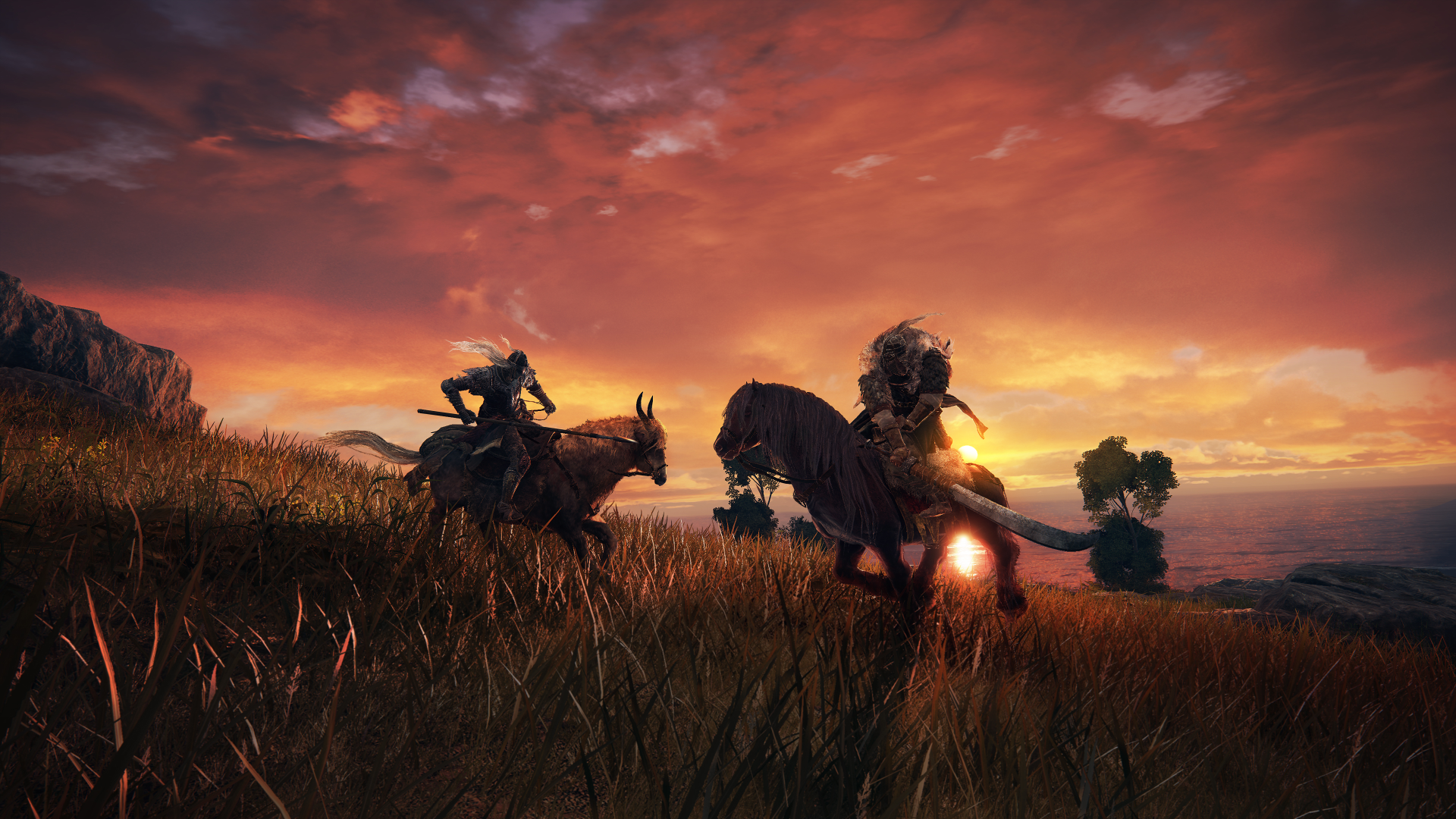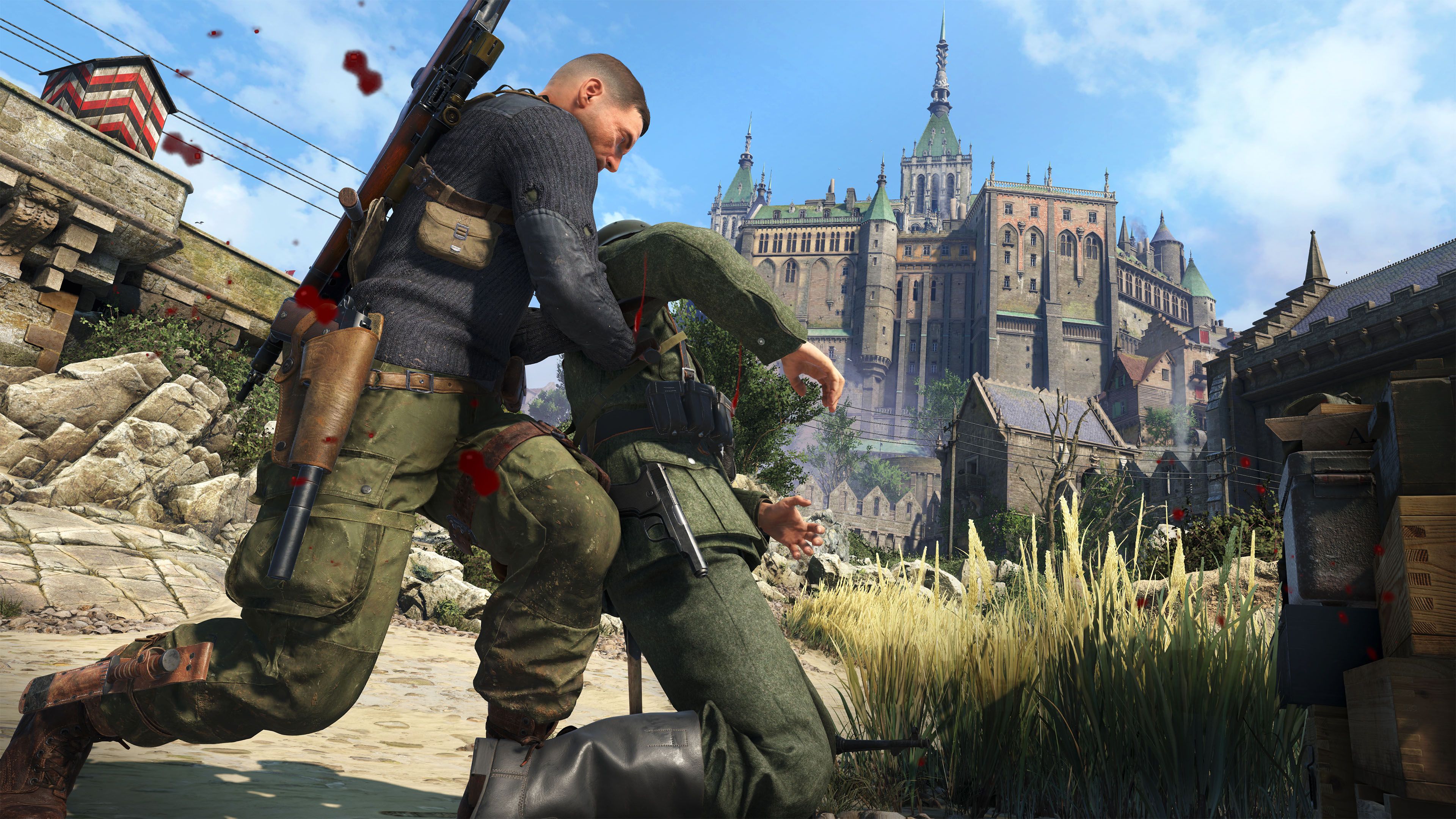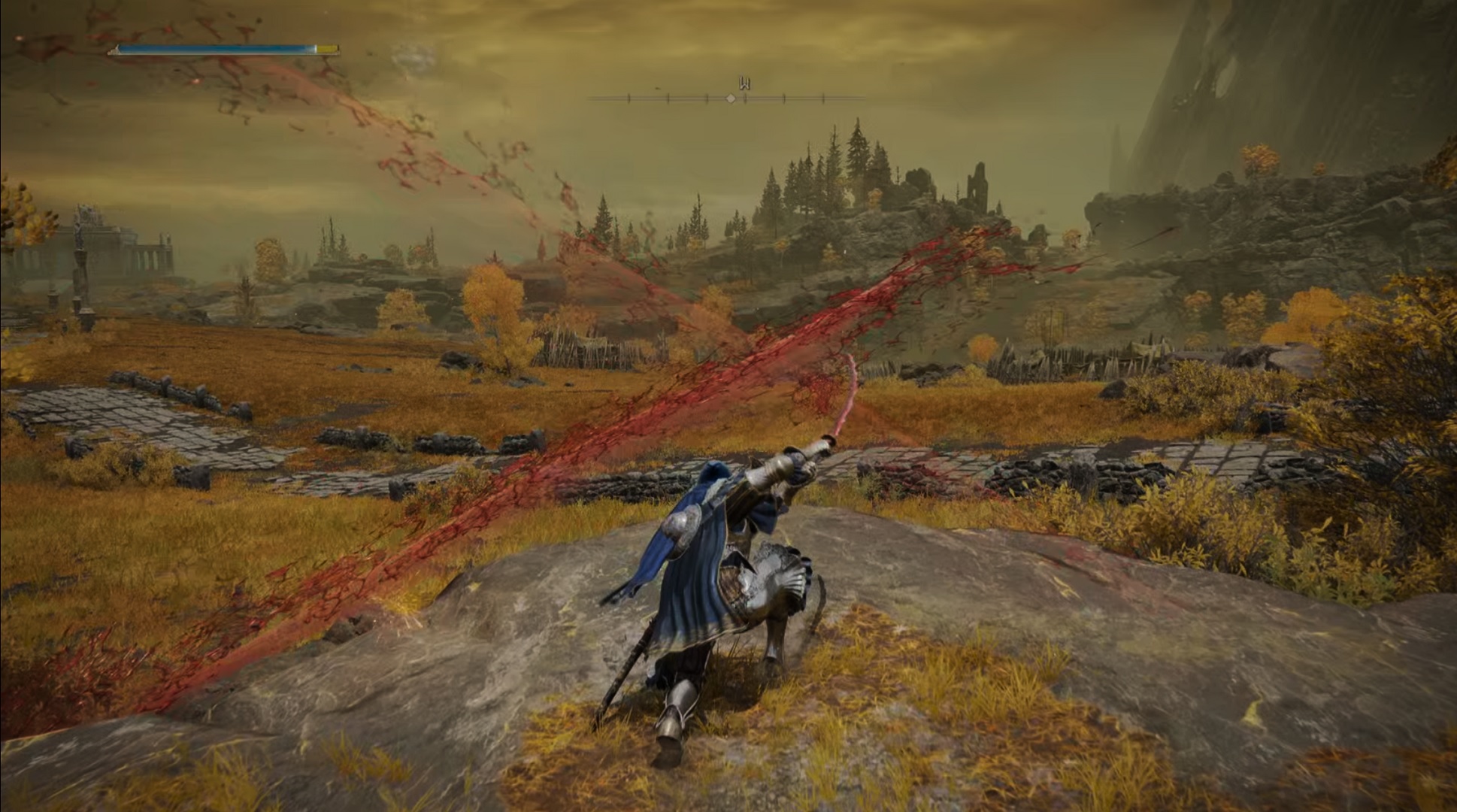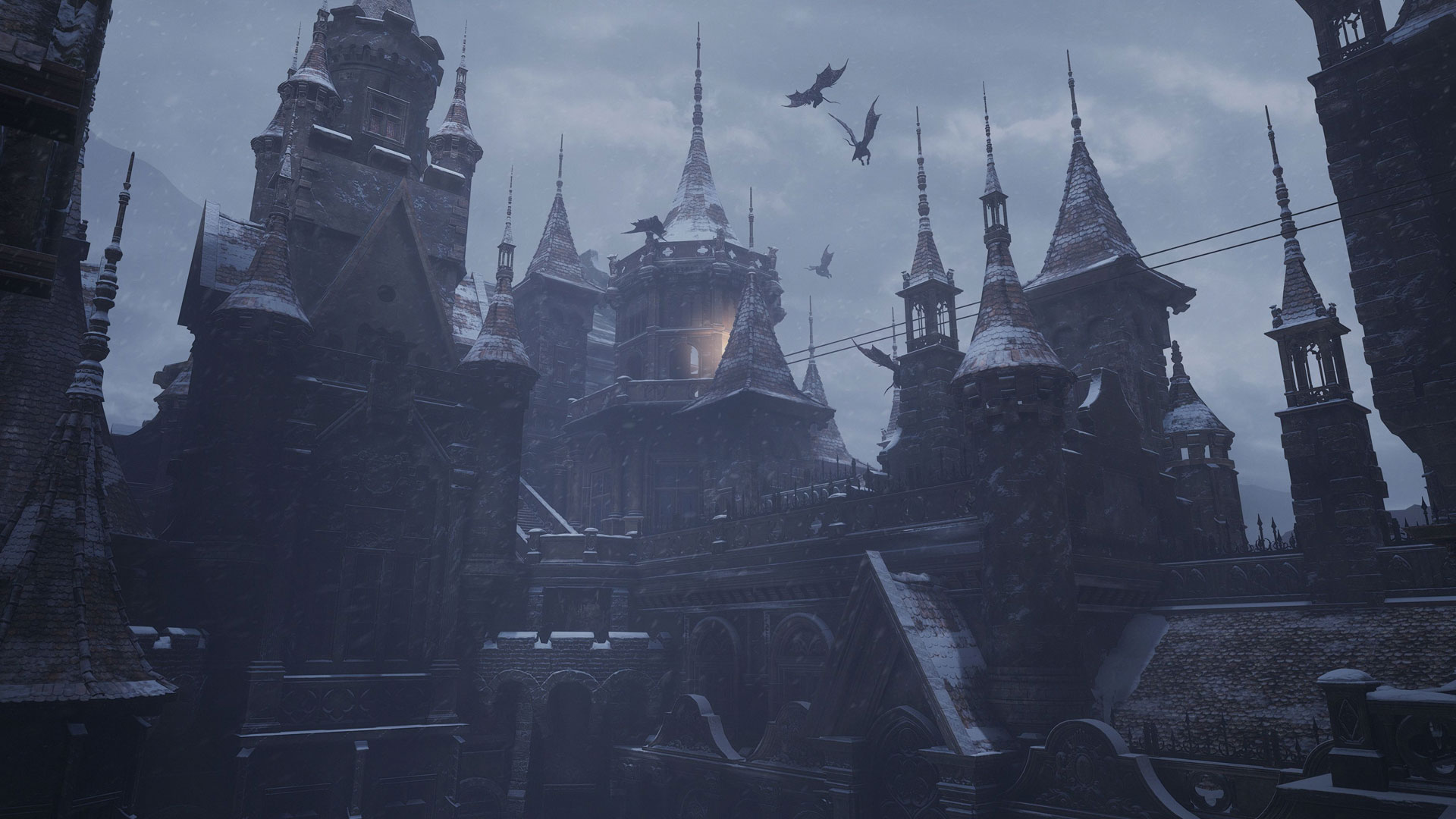Elden Ring has set a new standard for open worlds – where does that leave linear games?
And if it's fun, does it even matter?

Before Elden Ring, I couldn't have imagined comparing FromSoftware games to the Sniper Elite series. Storming a Nazi stronghold in the French countryside, murdering a captain and casing a farmhouse mansion for intel really is a million miles from wading knee-deep in Blighttown's poisonous sludge. But, now well over 200 hours into my adventure in the Lands Between, and having taken Sniper Elite 5 for a hands-on spin recently, I've found myself measuring the two in my mind more than I ever expected.
Don't get me wrong, being pursued by a giant severed hand while hurling magic spears at floating enemy jellyfish is hardly the same as headshotting an SS general with an M1903 Springfield rifle – but having rolled straight into my time with Rebellion's latest tactical third-person shooter from Elden Ring, one feature absolutely binds the two: the joy derived from executing a successful stealth kill. Another which puts the two completely at odds, however, is the boundaries of their level design.
Hard as rails


I'm avoiding Elden Ring new game+ by turning the Lands Between into a walking sim
Elden Ring has the best open world I have ever played. To be more than 200 hours into the game (over eight full real-life days), and still be uncovering vast swathes of explorable territory blows my mind. I haven't felt so passionately about a video game map since The Elder Scrolls 5's Skyrim, and probably GTA 4's faux-NYC Liberty City before that, but the Lands Between significantly dwarfs both in size, scale, looks, and intrigue; wherein every nook, cranny, crevice, and clifface begs to be explored because there just might be an item to be obtained, or a roving NPC with a story to tell and a burden to be shared.
Unlike the developer's previous games which favored verticality in their bid for seamless exploration – best showcased in the original Dark Souls, for my money – Elden Ring is far more flat and unbroken; its inviting world rolling out before the player like the most perilous of red carpets. It's smart in its layout too, often leading players to the game world's highest peaks before sending them to its lowest depths, in turn forcing the player to navigate valleys, chasms, and mountain ranges without guidance in search of their destination.
To go from this to Sniper Elite 5's more linear level design required some adjustment. To be absolutely clear: I loved my short time with Rebellion's latest, and I fully expect it to be received well when it lands later this month. But having gone from an all-encompassing, uber-explorable world in Elden Ring, to then being gated by insurmountable obstacles, such as small shelving units in narrow corridors, three-foot-high grassy knolls, and the odd invisible wall, I couldn't help but think about game design on the player's side in broader strokes.
Non-linear open-world games have become so big in recent years that, certainly in my experience, switching to games whose worlds are more focused and closed-off feels more jarring than it ever did before. In doing so, the transition is now so abrupt that I can't help but think games like Elden Ring, Red Dead Redemption 2, Zelda: Breath of the Wild, and Horizon: Forbidden West have spoiled us, particularly when these games execute the more focused stuff with equal aplomb. The question I keep coming back to my head, then, is: if a game is fun, does it really matter how much of its world we're allowed to explore?
Open to ideas

"Open world games are bigger than ever – where does that leave linear level design?"
To be fair to Sniper Elite 5, its missions can be tackled in a multitude of ways, more so than any of its predecessors. And when it's at its best, it's bloody brilliant. As alluded to in this article's opener, the joy of nailing a well-planned and well-executed stealth kill is second to none, as is watching the game's signature slow-motion death cam sequences time and time again. The fact that long stretches of its maps are designed to funnel players towards a central location or identifiable target feels less relevant when a key factor in getting there – i.e. shooting and killing Nazis in the most dramatic, Hollywood blockbuster-esque fashion – is so damn enjoyable.
Sign up to the GamesRadar+ Newsletter
Weekly digests, tales from the communities you love, and more
Looking over the fence into the horror genre, the evolution of Resident Evil in game world terms is interesting. The longstanding series' most recent entry, Resident Evil Village, is perhaps the most "open" map we've ever seen in this universe, with a degree of exploration afforded to players between the game's most linear, scripted set-pieces. Horror games by nature tend to be restrictive, claustrophobic endeavours as they strive for tension and scares, but everything from Dying Light and its sequel to The Evil Within 2 and Metro Exodus have, like Resident Evil Village, begun branching out and pushing their boundaries further than ever before. Elsewhere, Indie gem Darkwood delivers an intriguing top-down take on the horror-meets-open world slant, while The Forest blends survival and survival horror to great (and gorgeous) effect.
None of this is to suggest linear and non-linear games can't co-exist in the broad spectrum of video games, but as open-world experiences continue to grow, to offer players more freedom, more autonomy, and more choices, how more restrictive adventures adjust and adapt is perhaps just as exciting. It may be less than three months old, but Elden Ring has set a new standard in explorable sandbox terms – so much so, that I bet other studios with open-world projects in the works are getting a wee bit hot under the collar at the prospect of launching in its wake. On the flip side, I'm certain those in-development projects that can't offer worlds on the same scale as the Lands Between, Red Dead 2's American Frontier, or Horizon's Forbidden West will be laser-focused on making the minutiae count. Open world games are bigger than ever – where does that leave linear level design? I'm not sure it matters, so long as the games in question continue to entertain. In any event, I can't wait to see what both open and closed world games have in store for us as we wade deeper into the current console cycle.
The sky's the limit in the best open world games out there today.

Joe Donnelly is a sports editor from Glasgow and former features editor at GamesRadar+. A mental health advocate, Joe has written about video games and mental health for The Guardian, New Statesman, VICE, PC Gamer and many more, and believes the interactive nature of video games makes them uniquely placed to educate and inform. His book Checkpoint considers the complex intersections of video games and mental health, and was shortlisted for Scotland's National Book of the Year for non-fiction in 2021. As familiar with the streets of Los Santos as he is the west of Scotland, Joe can often be found living his best and worst lives in GTA Online and its PC role-playing scene.


